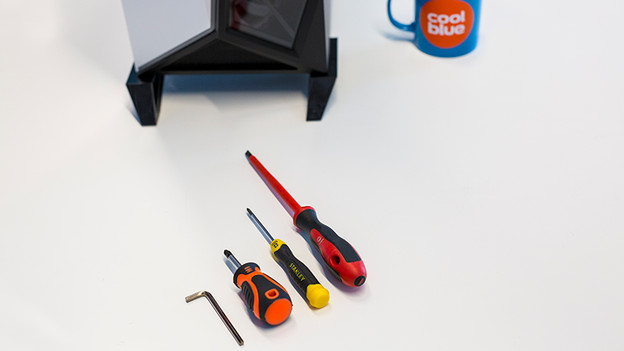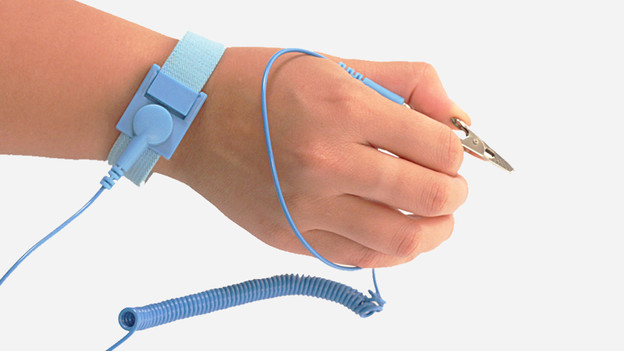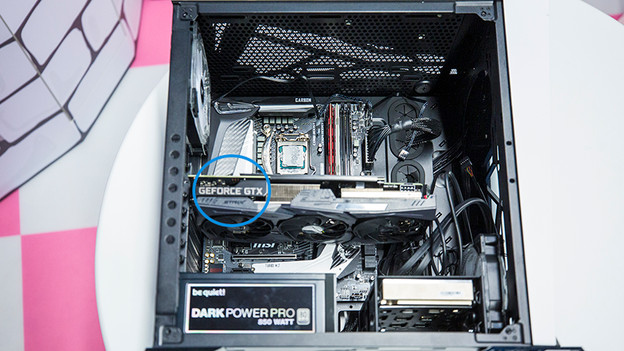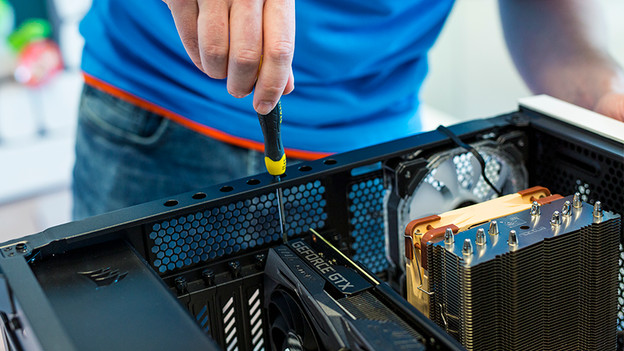
Written by Uhro
Edited on
16 April 2025
·
13:33
How do you install a video card in your PC?
You want to play games smoothly and with nice graphics. You've purchased a suitable video card for this. But how do you actually install such a graphics card in your computer? In this article, I'll explain that step by step.

What do you need?
- Tools to unscrew the computer case
- An antistatic wrist strap
- A desktop PC
- A video card
- A cup of coffee
Tip: leave your new video card in the antistatic bag for as long as possible. This minimizes the risk of damage due to static charge or dust.

1. The basics
Switch off your computer completely, so don't switch it to standby. Next, remove all cables, starting with the power cable. Then turn on your computer one more time, so that all the power remaining in the power supply also disappears.

2. Avoid static shocks
If you're going to tinker with a computer, it's important that you're not statically charged. A static shock, no matter how small, can be disastrous for the components in your computer. That's why I recommend that you to always wear an antistatic wrist strap.

3. Open your computer
Place the casing of your computer on the table with the left side up. If necessary, use a towel to protect your case from scratches. Turn the back of the computer case towards you. There, you'll see 2 or 3 large screws. Unscrew them and slide away the side of your computer. You'll now see the motherboard and all the components of your PC.

4. Locate the video card
If you currently have a video card in your PC, you'll find it in the bottom left of the motherboard, in a PCIe slot. This is an elongated expansion slot in your computer. The connectors for your screen show you the way to your current video card. If you don't have an installed graphics card yet, look for an elongated connection point that's less than a centimeter wide, but about 9 centimeters long. This is where you'll be placing the video card.

5. Remove the current video card
You should obviously skip this step if you don't have a separate video card in your computer yet.
Before installing a new video card, you must first replace the current graphics card. To do this, first remove the screw that's attached to the metal plate on the back of the video card. After the screw has been removed, grab the video card with 2 hands and gently pull it out. If this doesn't work right away, lightly push the PCIe connector. Don't push the motherboard, as this could damage the circuit board.

6. Install the video card
Remove the video card from the antistatic packaging and place it on top while you prepare. Was there no video card in your computer yet? Then remove the metal plate behind the suitable PCIe slot. You do this by removing the screw.
Now carefully pick up the video card and place it in the PCIe expansion slot. Push it slowly and firmly, but certainly not too hard. Is the video card secure? Then secure it to your computer case with the screw you just removed.

7. Use it
Slide the side back onto your computer case and reconnect it immediately. Normally, your computer boots in the usual way. You don't always get an image from your new video card right away, so if your screen remains black, try connecting it to the video output of your computer. When your operating system is loaded, install the included drivers of your graphics card. After restarting again, you can really get started with your new video card.
Article by Uhro
Video Card Expert.
